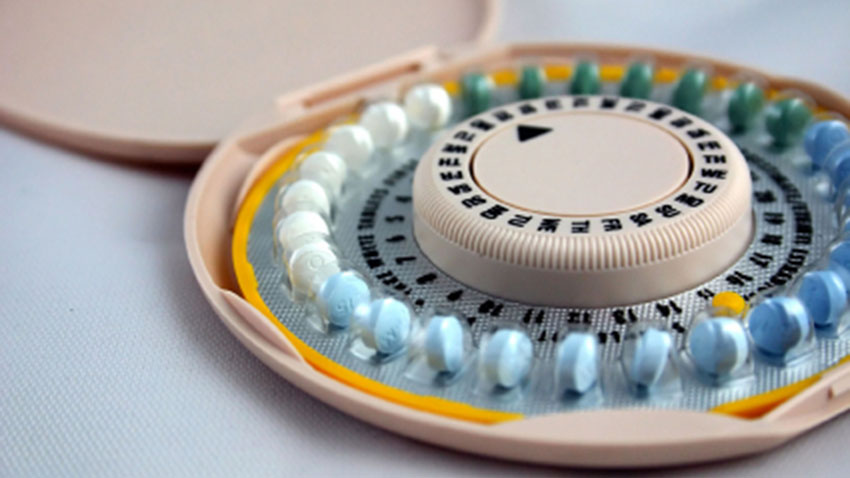Chronic Disease Education
Acute Condition Education
Working with your Family Physician
Working with Allied Care Providers
Birth Control Options

Knowledge is Power.
True/False - Quiz: Do You Understand Birth Control Options?
Information - Birth Control Options
 Birth control is an important topic for all sexually active women to discuss with their family physician. Stats show that 85 out of 100 women who have unprotected intercourse for one year will get pregnant. There are various types of birth control available to help prevent pregnancy, and condoms can decrease your risk of sexually transmitted infections.
Birth control is an important topic for all sexually active women to discuss with their family physician. Stats show that 85 out of 100 women who have unprotected intercourse for one year will get pregnant. There are various types of birth control available to help prevent pregnancy, and condoms can decrease your risk of sexually transmitted infections.
Types of Birth Control
• Abstinence: Not having sex.
• Barrier methods: Condoms, diaphragms and sponges. You'll need a prescription for a diaphragm.
• Emergency contraception: Used if a condom breaks or you don't use birth control. Generally available without a prescription.
• Hormonal methods: Birth control pills, patch, vaginal ring or shots (such as Depo-Provera). You'll need a prescription for hormonal birth control.
• Intrauterine devices (IUDs): There are two main types that can be inserted into your uterus by your physician: a copper IUD and a hormonal IUD.
• Natural family planning: Sometimes called the pull-out method, your risk of getting pregnant is much higher than with other types of birth control.
• Sterilization: Vasectomy for men and tubal ligation for women.
If taken regularly, birth control today is very effective. For example, the birth control pill provides protection against pregnancy in 99.9 percent of patients. This would be similar for condoms and spermicidal jelly as well as the IUD. Remember that if you also want to protect against sexually transmitted infections, condoms are still your number one choice.
Risks of Using Birth Control
 In addition to a risk of getting pregnant even while using birth control, certain methods have other side effects. Birth control pills with estrogen can lead to a higher risk for heart attack, blood clots and stroke in women who smoke, especially those over 35 years of age. Side effects of the birth control shot include irregular periods (most common in the first 6 to 12 months following an injection), increased spotting, weight gain and tender breasts. If you use the birth control patch or a vaginal ring, you have a higher risk of developing liver problems, heart attack, stroke and blood clots. Some women who use an IUD experience increased cramps and vaginal bleeding, and in 1 out of every 1,000 women, the IUD will get stuck or perforate the uterus.
In addition to a risk of getting pregnant even while using birth control, certain methods have other side effects. Birth control pills with estrogen can lead to a higher risk for heart attack, blood clots and stroke in women who smoke, especially those over 35 years of age. Side effects of the birth control shot include irregular periods (most common in the first 6 to 12 months following an injection), increased spotting, weight gain and tender breasts. If you use the birth control patch or a vaginal ring, you have a higher risk of developing liver problems, heart attack, stroke and blood clots. Some women who use an IUD experience increased cramps and vaginal bleeding, and in 1 out of every 1,000 women, the IUD will get stuck or perforate the uterus.
The type of contraception that's right for you depends on your current health, lifestyle and if/when you want children. Your doctor can help you choose the best method for you and your partner.
Talk to your family physician if you'd like more information on birth control options.
Visit HealthChoicesFirst.com for more videos and resources on family health.
Print this Action Plan and check off items that you want to discuss with your healthcare provider
-
Barrier birth control methods include condoms, diaphragms and sponges. You'll need a prescription for a diaphragm.
-
Hormonal methods include birth control pills, patch, vaginal ring or shots (such as Depo-Provera). You'll need a prescription for hormonal birth control.
-
There are two main types of intrauterine devices (IUDs) that can be inserted into your uterus by your physician: a copper IUD and a hormonal IUD.
-
If taken regularly, birth control today is very effective. For example, the birth control pill provides protection against pregnancy in 99.9 percent of patients. This would be similar for condoms and spermicidal jelly as well as the IUD. Remember that if you also want to protect against sexually transmitted infections, condoms are still your number one choice.
-
In addition to a risk of getting pregnant even while using birth control, certain methods have other side effects. For example, birth control pills with estrogen can lead to a higher risk for heart attack, blood clots and stroke in women who smoke, especially those over 35 years of age.



